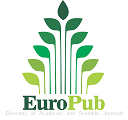Performance Pheretima sp. and The Quality of Vermicompost on Media Using Clam and Snail Shell Flour
Abstrak
The abundance of green mussel shells, clam shells, and snail shells that have not been maximally utilized has caused environmental disturbances. These shells can be used as a substitute for worm food because of their good nutritional content. This research aimed to analyze the productivity of Pheretima sp. with the combination of shell powder (green mussel, clam, and snail) and cow dung to their living media (feed) and the quality of vermicompost. The data were analyzed using SAS Studio application with completely randomized design (CRD), 10 treatment levels, with 3 replications each. The observed variables included earthworm productivity, vermicompost quality, and vermicompost performance. The results of the study
show a significant (P<0.05) on the use of green mussel shell 10% in all earthworm productivity variables, and show a significant (P<0.05) on the use of green mussel shell 30% in vermicompost quality and vermicompost performance. The combination of 10% green mussel shell powder in cow dung media can increase the productivity of Pheretima sp. The best vermicompost testing result on water spinach plants was found in the treatment with the addition of 30% green mussel shell powder in cow dung media.















